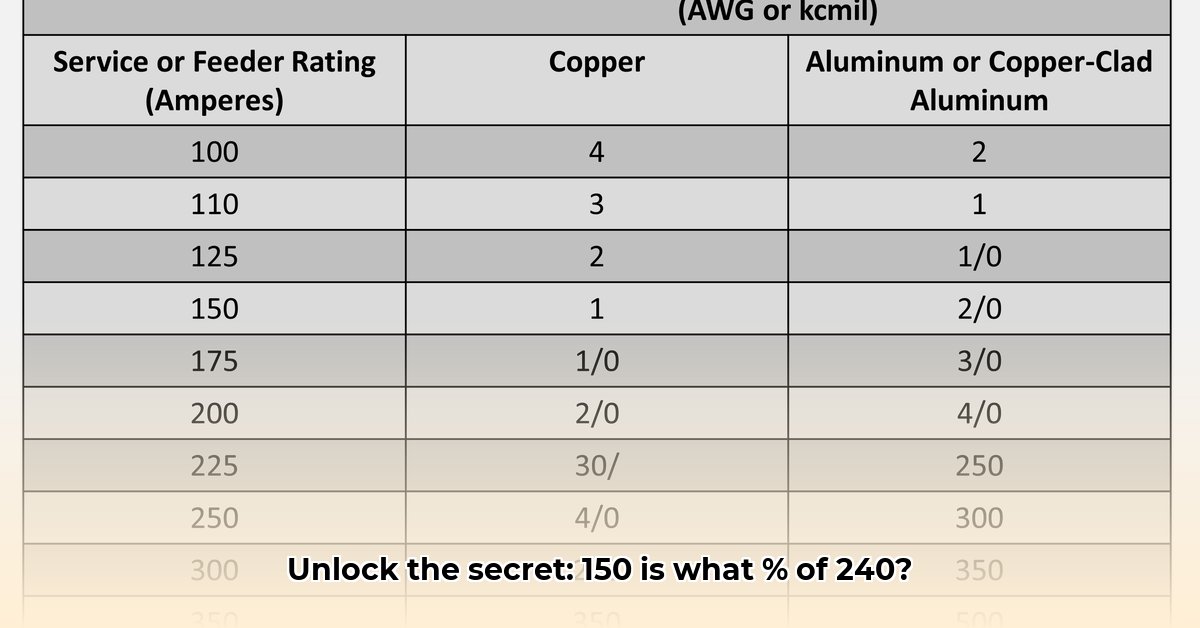
Finding percentages is a valuable skill with applications ranging from everyday budgeting to advanced statistical analysis. This guide provides a step-by-step approach to solving "150 is what percent of 240?", catering to various mathematical backgrounds. We'll explore two methods, highlighting their respective strengths and weaknesses, and offer practice problems to solidify your understanding.
Understanding the Problem: 150 is What Percent of 240?
Before diving into calculations, let's visualize the problem. Imagine you have 240 apples, and you give away 150. We want to determine what proportion, or percentage, of the total apples you gave away. This involves finding the relationship between the part (150) and the whole (240).
Method 1: The Fraction Method – A Visual Approach
This method uses fractions, which are excellent for visualizing proportions. Remember, a percentage is simply a fraction expressed out of 100.
Form the Fraction: Represent the problem as a fraction: 150/240. This means 150 out of 240.
Simplify: To simplify, find the greatest common divisor (GCD) of 150 and 240, which is 30. Divide both the numerator and denominator by 30 to get 5/8. This simplified fraction represents the same proportion.
Convert to an Equivalent Fraction: We need a fraction with a denominator of 100 to express it as a percentage. To achieve this, divide 100 by the current denominator (8): 100/8 = 12.5. Now, multiply both the numerator and denominator of 5/8 by 12.5: (5 * 12.5) / (8 * 12.5) = 62.5/100.
Express as a Percentage: A fraction with a denominator of 100 directly translates to a percentage. Thus, 62.5/100 is 62.5%. Therefore, 150 is 62.5% of 240.
Method 2: The Direct Calculation Method – For Speed and Efficiency
This method offers a quicker route, ideal for those comfortable with decimal calculations.
Divide the Part by the Whole: Divide the part (150) by the whole (240): 150 ÷ 240 = 0.625. This decimal represents the proportion of 240 that 150 constitutes.
Convert to Percentage: Multiply the decimal by 100 to convert it to a percentage: 0.625 * 100 = 62.5%. So, 150 is 62.5% of 240.
Comparing the Methods: Finding Your Preferred Approach
Both methods yield the same result, but each has its advantages:
| Method | Advantages | Disadvantages |
|---|---|---|
| Fraction Method | Builds conceptual understanding; visually intuitive; ideal for beginners. | More steps; potential for decimal calculation errors. |
| Direct Calculation | Faster and more efficient; fewer calculation steps. | Less intuitive; might not build strong conceptual understanding for beginners. |
Practice Problems: Sharpen Your Skills
Test your newly acquired knowledge with these practice problems:
- What percentage of 180 is 45?
- 60 is what percent of 200?
- If 25 is 10% of a number, what is that number?
Additional Resources: Expanding Your Knowledge
Many online resources can help you further refine your percentage calculation skills. Explore educational websites and interactive percentage calculators for extra practice and deeper understanding. Mastering percentages opens doors to various mathematical and real-world applications, improving your problem-solving skills. Remember, consistent practice is key to mastering any mathematical concept!